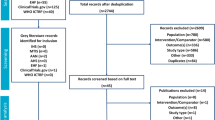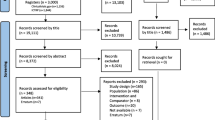Abstract
Background
The physician treating patients with migraine is now able to choose from among seven triptans–almotriptan, eletriptan, frovatriptan, naratriptan, rizatriptan, sumatriptan and zolmitriptan. These differ, to greater or lesser degrees, on a range of clinical attributes important for treatment selection.
Objective
To outline the basic principles of Multiattribute Decision Making (MADM) and describe how one such method–TOPSIS (Technique for Order Preference by Similarity to the Ideal Solution)–can be applied to evaluate the currently available triptans.
Methods
In an example application, summary data from a recent meta–analysis of 53 published and unpublished placebo–controlled trials of the oral triptans were combined in TOPSIS models with computer–generated attribute importance weights representing the entire range of possible values, That is, the relative performance of the triptans was explored across all logically possible combinations of relative importance of the treatment attributes available from the meta–analysis, and uncertainty was assessed based on the confidence intervals from the meta–analysis.
Results
When compared across the entire range of values for relative attribute importance, almotriptan, eletriptan and rizatriptan were more similar to a hypothetical ideal triptan and were more likely to appear in the top three closest to the hypothetical ideal, than were naratriptan, sumatriptan, and zolmitriptan.
Conclusion
Using the TOPSIS model, almotriptan, eletriptan and rizatriptan were more likely to appear in the top three closest to the hypothetical ideal triptan.
Similar content being viewed by others
References
Ferrari MD, Roon KI, Lipton RB, Goadsby PJ (2001) Oral triptans (serotonin 5-HT1B/1D agonists) in acute migraine treatment: a meta-analysis of 53 trials. Lancet 358:1668–1675
Dolan JG (1989) Medical decision making using the analytic hierarchy process: choice of initial antimicrobial therapy for acute pyelonephritis. Med Decis Making 9:51–56
Barriere SL (1991) Formulary evaluation of second-generation cephamycin derivatives using decision analysis. Am J Hosp Pharm 48:2146–2150
Schumacher GE (1991) Multiattribute evaluation in formulary decision making as applied to calcium-channel blockers. Am J Hosp Pharm 48: 301–308
Eriksen S, Keller LR (1993) A multiattribute- utility-function approach to weighing the risks and benefits of pharmaceutical agents. Med Decis Making 13:118–125
Dolan JG, Bordley DR (1994) Isoniazid prophylaxis: the importance of individual values. Med Decis Making 14: 1–8
Brodie MJ, Kwan P (2001) The Star Systems: overview and use in determining antiepileptic drug choice. CNS Drugs 15:1–12
Lipton RB, Hamelsky SW, Dayno JM (2002) What do patients with migraine want from acute migraine treatment? Headache 42:S3-S9
Yoon KP, Hwang CL (1995) Multiple Attribute Decision Making: An Introduction. Sage, Thousand Oaks, pp 38–40
Lipton RB, Stewart WF (1999) Acute migraine therapy: do doctors understand what patients with migraine want from therapy? Headache 39(Suppl 2):S20–S26
Barron FH, Barrett BE (1996) Decision quality using ranked attribute weights. Manag Sci 42:1515–1523
Dolan JG, Isselhardt BJ, Jr. , Cappuccio JD (1989) The analytic hierarchy process in medical decision making: a tutorial. Med Decis Making 9:40–50
von Winterfeldt D, Edwards W (1987) Decision Analysis and Behavioral Research. Cambridge University Press, Cambridge
Abi-Zeid I, Belanger M, Guitouni A, Martel JM, Jabeur K (1998) A Multicriteria Method for Evaluating Courses of Action in Canadian Airspace Violation Situations. Available at: http://www. dodccrp. org/Proceedings/ DOCS/wcd00000/wcd091. htm. Accessed 14 Jan 2003
Hwang CL, Yoon KP (1981) Multiattribute Decision Making: Methods and Applications. Springer, Berlin, pp 128–140
Azar F (2000) Multi-attribute decision making: use of three scoring methods to compare the performance of imaging techniques for breast cancer detection. Available at: http://www. seas. upenn. edu/be/Tech_Reports/fredazar_ rechreport_MS_BE_00_01. PDF. Accessed 21 Oct 2002
Alberto C, Carignano C, Fultot M (2000) Evaluacion de la eficinecia de los sistemas de salud publica provincial en Argentina. Available at: http://selene. uab. es/dep-economiaempresa/ documents/tema_2. rtf. Accessed 21 Oct 2002
Zeleny M (1982) Multiple Criteria Decision Making. McGraw Hill, New York
Deng H, Yeh CH, Willis RJ (2000) Intercompany comparison using modified TOPSIS with objective weights. Computer Operations Res 27:963–973
Dodick D, Cutrer FM, Ferrari M, et al. (2002) Prioritization of treatment attributes in selecting an oral triptan: a survey of US neurologists. Headache 42:392
Cutrer FM, Goadsby PJ, Ferrari M, et al. (2002) Prioritization of treatment attributes in selecting an oral triptan: a survey of US primary care physicians. Headache 42:392–393
Lipton RB, Liberman J, Goadsby PJ, et al. (2002) An assessment of the priorities of US migraineurs with respect to prespecified triptan treatment attributes. Headache 42:394–395
Hess G (2002) The use of multiattribute analyses, multi-dimensional scaling and pairwise comparisons for group decision-making. ISPOR News 8:4–6
Author information
Authors and Affiliations
Corresponding author
Rights and permissions
About this article
Cite this article
Ferrari, M.D., Goadsby, P.J., Lipton, R.B. et al. The use of multiattribute decision models in evaluating triptan treatment options in migraine. J Neurol 252, 1026–1032 (2005). https://doi.org/10.1007/s00415-005-0769-0
Received:
Revised:
Accepted:
Published:
Issue Date:
DOI: https://doi.org/10.1007/s00415-005-0769-0




